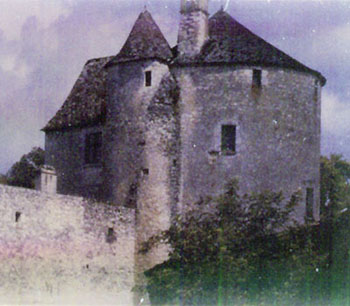Assaying Montaigne
Today, we assay a life. The University of Houston's Honors College presents this program about the machines that make our civilization run, and the people whose ingenuity created them.
When students hear the word "essay-writing", they reach for their notes. The essay form is the narrow and sad vehicle into which students pile facts and figures gleaned from books and lectures. How far have we fallen from the intention of the essay's inventor, Michel de Montaigne.
 Montaigne was born into interesting times -- alas. Sixteenth-century France was awash in blood spilled by religious and political wars. In 1572, Paris witnessed the St Bartholomew Day Massacre. That day, the Queen Mother, Catherine de Medici, ordered the murder of several thousand Protestants, their bodies then thrown into the Seine. Henri of Navarre, the future King Henri IV, pragmatic fellow that he was, escaped the carnage by temporarily converting.
Montaigne was born into interesting times -- alas. Sixteenth-century France was awash in blood spilled by religious and political wars. In 1572, Paris witnessed the St Bartholomew Day Massacre. That day, the Queen Mother, Catherine de Medici, ordered the murder of several thousand Protestants, their bodies then thrown into the Seine. Henri of Navarre, the future King Henri IV, pragmatic fellow that he was, escaped the carnage by temporarily converting.
This novel approach to resolving religious conflict didn't work. The civil war worsened and swept up Montaigne. Sent to Paris on a mission to mediate between King Henri III and Henri of Navarre, Montaigne was imprisoned and his life threatened first by Protestants, then by Catholics. Not surprisingly, his effort to bring together extremists on both sides failed.
Montaigne then did what any reasonable man would do: he retired from public affairs. He turned to writing. Not chronicles or poetry, but something never before done: personal essays. His goal, he wrote, was to be "seen in my simple, natural, everyday fashion, without ... artifice: for it is my own self that I am painting."
For Montaigne, an essay is an experiment -- a provisional movement, a tentative exploration open to revision. A true empiricist, he assays: he probes, he pokes, he weighs. He writes, "If my soul could only find a footing I would not be assaying myself but resolving myself. But my soul is ever in its apprenticeship and being tested."
Yet his measuring scales are not objective: they are specific to Montaigne and they change over time just as he does. While others write about "man," Montaigne intends to sketch just one man, himself, who, he notes, "was very badly formed ... I am not portraying being but becoming: not the passage from one age to another ... but from day to day, from minute to minute."
Not only do Montaigne's essays capture the flux of his life: they also underline the importance of humility. When the subject is humankind, we rarely can be definitive. As a result, we must not be afraid to admit our ignorance of causes, our loss for words, our inability to provide final solutions. Nor must we be afraid to recall, as does Montaigne, that even "on the highest throne in the world, we are seated, still, on our behinds".
Montaigne rejected all claims to absolute truth; the best he could do was to sketch -- to assay -- one finite and imperfect person. Yet, even there he finds "such boundless depths and variety that my apprenticeship bears no other fruit than to make me know how much there remains to learn." Montaigne reminds us that, at the end of our days, we remain the students we were at the start.
I'm Rob Zaretsky at the University of Houston, where we're interested in the way inventive minds work.
Michel de Montaigne, The Essays: A Selection. tr. by M.A. Screech (New York: Penguin, 1991).
Montaigne portrait above is a public domain image courtesy of Wikipedia. Below, photos of Montaigne's small castle, Château de Montaigne, and the tower in which Montaigne wrote, by RZ.

